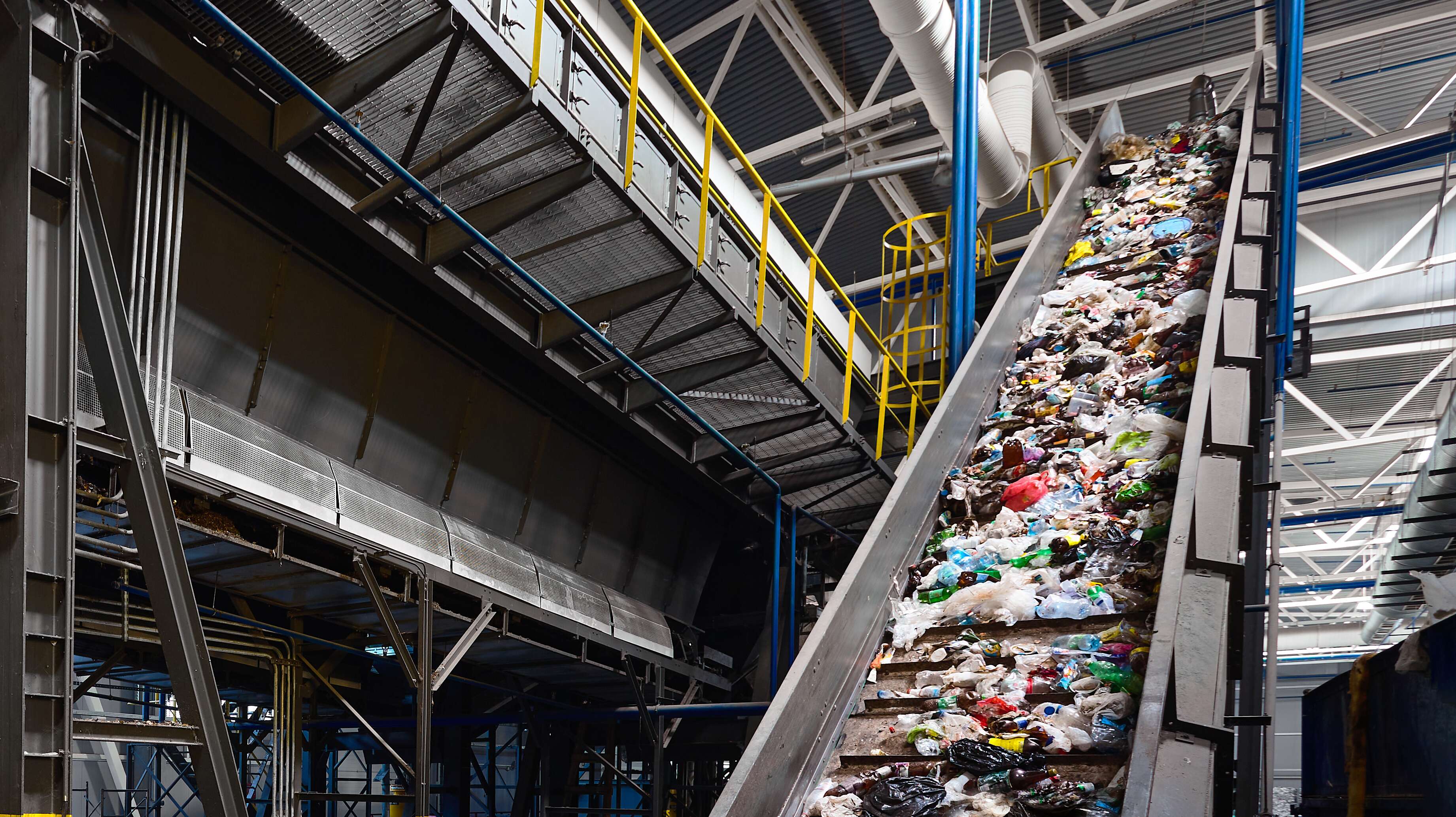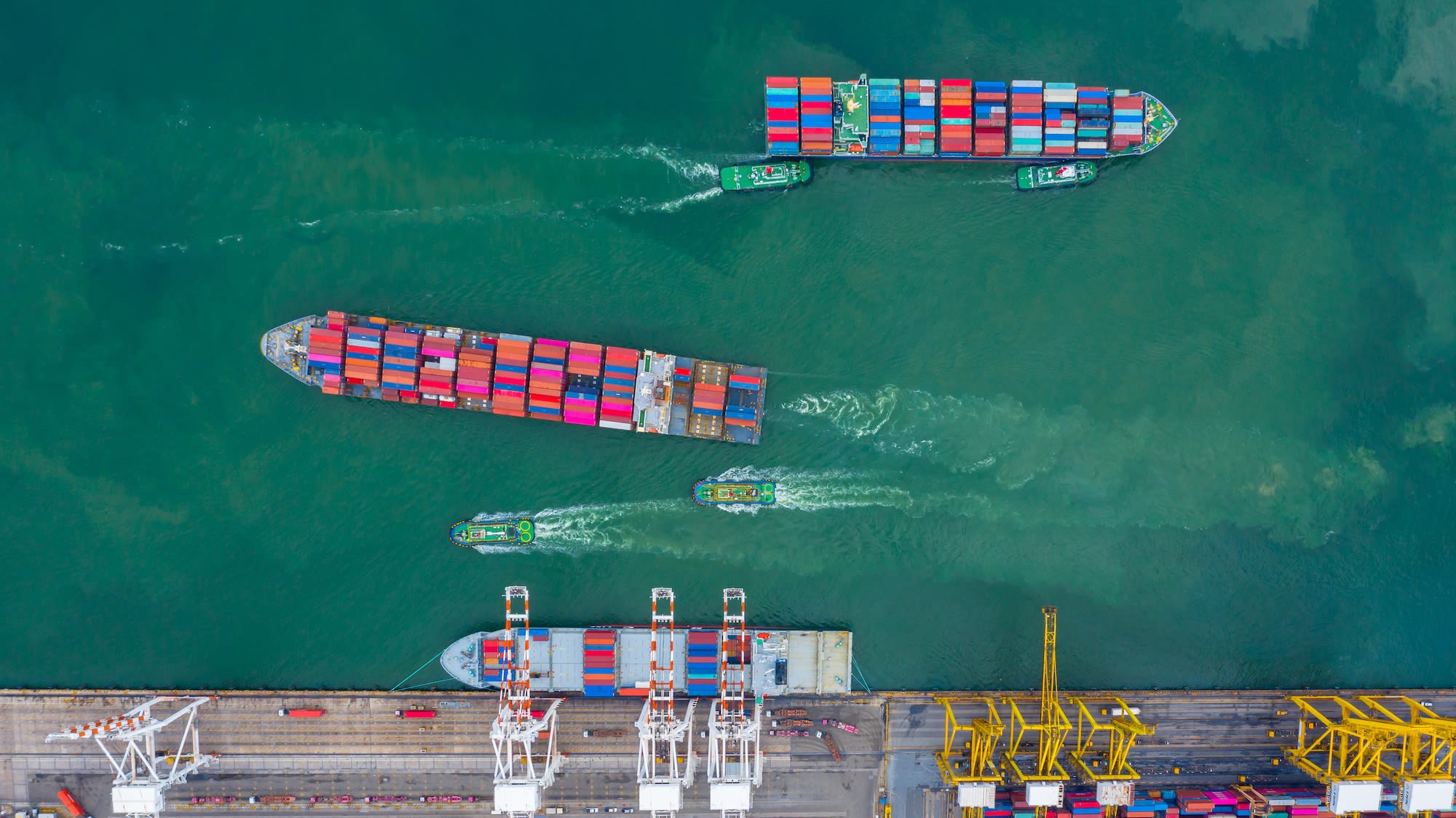Scaling the circular economy requires more companies to launch circular products and services, but many competitors transitioning towards the circular economy face similar barriers to scale.
One way to address this is commercial collaboration, where businesses work together on issues that are not tied to their competitive advantage.
In this episode, we’ll hear from Sarah Dodge and Mark Buckley from the Ellen MacArthur Foundation about how this can help to scale a circular economy.
We’ll also explore how one initiative has helped address a bottleneck in post-consumer recycling.
Hear how companies from the Ellen MacArthur Foundation's Plastics Mission worked together to develop a unified vision and enable high-quality plastic waste sorting at scale with HolyGrail 1.0. This evolved into HolyGrail 2.0, where joint investment in R&D was crucial in helping it get from concept to market in just a few years.
To discuss the project, Sander Defruyt, Lead of Strategy & Thought Leadership for the Plastics Mission, is joined by Gian De Belder, Technical Director of Packaging and Sustainability at Procter & Gamble, and Margherita Trombetti, Project Manager at the European Brands Association (AIM).
Watch or listen to the full episode to learn how:
Cross-value chain collaboration was essential to align on the technology and achieve scale
Growing interest allowed participation to grow from 31 companies in HolyGrail 1.0 to 176 in 2.0
The European Brands Association (AIM) facilitated the governance, confidentiality, and communications of 2.0
If you enjoyed this episode, please leave us a review or a comment on Spotify or YouTube. Your support helps us to spread the word about the circular economy.
Transcript
Click to expand
[01:00:08.000] - Pippa For a long time, we've talked about the need for collaboration to help scale a circular economy. But how does that work in practice? Later on, we're going to hear about an initiative that are working on that. But first of all, to help me set the scene, I'm joined by my colleagues, Mark and Sarah. Welcome both.
[01:00:24.580] - Sarah Thank you so much. Excited to be here.
[01:00:26.230] - Mark Hi, Pippa.
[01:00:26.830] - Pippa Mark, can you set the scene for us where we're at the moment with collaboration?
[01:00:31.500] - Mark Yeah. Ultimately, to scale a circular economy, we need more companies to launch circular products and services. To do that, internally, they need to create a positive business case for why they should do that. We see hundreds of companies, loads of examples of real products and services in the world where that's happened, leading companies who've made that possible.
[01:00:53.800] We've also got to recognise that in many places that just isn't possible. It's not commercially compelling. It might be because there's a lower margin or a longer return on investment, or perhaps the infrastructure that's needed for that product doesn't exist, or the behaviour change that would be needed to enable it would be it's really seismic.
[01:01:13.160] Companies can come together to share knowledge and learnings, to find the roadblocks to do that, and that can enable more companies to scale individual offerings. They can come together to advocate for policy change to make those propositions possible, or actually, they can do something else. They can also, within their own agency, work together differently and collaborate commercially to unlock the investment, to increase the economies of scale, or to access a whole new set of customers that they couldn't do on their own.
[01:01:45.860] - Pippa Sarah, to bring you in there, what sets that commercial collaboration that Mark is talking about apart from other styles?
[01:01:53.820] - Sarah Yeah, definitely. I think Mark started it. But commercial collaboration, as he was alluding, it's really about going further than just sharing knowledge and setting direction or creating definitions as an industry, but it's about pooling your resources to actually shift the market and create value, jointly or with your competitors.
[01:02:13.960] In our research, we've identified four pathways, I would say, that companies can come together and work on, the first being accelerating innovation. Companies can come together to pool data, to actually share their IP, or create inoperability, which helps reduce costs and speed up research and development, really, especially at that system level scale.
[01:02:40.840] Second, companies can pool their buying power and actually aggregate their demand or set advanced market commitments, which again reduces costs often times, but also instils that trust in new novel solutions or technology and allows them to be commercially viable at a larger scale.
[01:03:03.960] Then thirdly, companies can do what we all talk about a lot in the circular economy, which is building shared infrastructure. Pooling their resources and developing critical assets, infrastructure and logistics to address those shared bottlenecks that we all know so well.
[01:03:22.140] Then, fourth is driving customer adoption. This is actually where companies can have joint marketing efforts and messaging to enable that massive behaviour change that we need while also expanding their customer base.
[01:03:37.040] - Pippa Normalising as well, right?
[01:03:39.000] - Sarah Yeah.
[01:03:39.210] - Pippa It's the industry norm instead of this outlying company.
[01:03:42.380] - Sarah Exactly. Just simplifying it, I think, for the end consumer or their customers.
[01:03:47.880] - Pippa It'd be great to hear more about whether this is actually happening. What examples do we have?
[01:03:54.600] - Sarah Yeah. As Mark said, there are tonnes of examples from the linear economy and fewer from the circular economy, but there are some great ones that we've seen, especially where competitors are working together. One is the HolyGrail initiative, where they've actually brought the full value chain to collaborate on accelerating innovation for digital watermark technology, which helps with post-consumer waste sorting to enable that recycling that we need at scale.
[01:04:24.120] - Pippa We're really lucky that our colleague, Sander, was in the initial phases of setting that up. Rather than us trying to talk about it, I asked him to sit down with his colleagues. He spoke to Gian De Belder from Procter & Gamble and Margherita Trombetti from the European Brands Association, AIM, to talk about their experiences and how it's evolved. Shall we listen to their conversation?
[01:04:45.900] - Sarah Yeah.
[01:04:46.520] - Mark Let's do it.
[01:04:51.320] - Sander We're here today to talk about Project HolyGrail as a great case example of large-scale coopetition between a group of stakeholders across the value chain. Project HolyGrail emerged back in 2017 as a pioneer project in the foundation's Plastics Initiative, where you, Gian, pitched the idea of exploring together the potential of digital watermarks in packaging, and that attracted a lot of companies to get together and work with you. But maybe before we dive in, Gian, can you tell us very quickly what are digital watermarks, and why are they so important?
[01:05:32.040] - Gian De Belder Digital watermarks are basically tiny codes, typically the size of a post-stamp, that are added either to the print of a package or to the models that are producing these type of packaging materials. These codes are then, most of the time, imperceptible towards consumers and truly provide a digital product passport to the product.
[01:05:54.380] Then obviously, with this digital product passport, the way sources and recyclers can do a much better job in terms of sortation. They can easily sort items on an article level simply because each article has its own identity. For example, it allows sorting food from non-food, which today is a big unmet need, specifically for polyolefins.
[01:06:17.860] - Sander Then you pitch the project to work together as a value chain. Why was cross-value chain collaboration so important to make digital watermarks work?
[01:06:26.580] - Gian De Belder Yeah, we have seen that there were a couple of isolated cases where people try to work together with a few players, but it was always limited. If you don't If you agree upfront on a system as an industry, then obviously, you cannot create scale. That's the most important, I believe.
[01:06:45.980] You form a cross-value chain collaboration with all of the relevant partners. You agree on a certain technology to be implemented and tested in the marketplace. Only then you should ask the brand owners and retailers to embrace that technology and to foresee samples in the marketplace. The key here is really to create a scale and align upfront before you bring new technologies into the marketplace.
[01:07:13.240] - Sander Yeah. Crucially important to get both the upstream value chain players and the downstream players to work together, make the whole system work. I remember that one of the first things we did was with the two of us back in the day is organising this workshop. Must have been the world's first workshop on this topic in the packaging industry. It attracted many dozens of organisations to actually join and participate and think about how this technology could be of use, what the potential was, etc.
[01:07:43.620] Given this was a completely new topic, what do you think motivated, yourself as PNG, but also the many other organisations, to get engaged and get involved in the project?
[01:07:54.980] - Gian De Belder I think for several years, we heard a lot about the transition to a circular economy requires systemic change, which is indeed a true statement as we need to go beyond the status quo. Also in similar conversations, we hear a lot about collaboration needs, a typical multi-party and so on, which is truly needed, fully agree. But what is really needed is collective action with a full cross-value chain, including your competitors, in order to scale and to make a huge impact.
[01:08:31.840] I think that's really one of the things that the new plastics economy from EMF have allowed us to do. It allowed us really to find a space to reach out to the members at that moment in time of new plastics economy, but also beyond members, because we also had some non-members at that moment in time. But that was important. It's more about just talking and telling people that systemic change is needed. It's really driving an action.
[01:09:04.060] I think overall, HolyGrail has been a very nice example of such a cross value chain thinking in HolyGrail 1.0 as being worked as a pioneer project, we basically had 31 members. In HolyGrail 2.0, we actually had 176. A very large group, a very large representation of a full value chain.
[01:09:28.720] At the end, we're all using packaging, either plastic or paper, it doesn't matter. It's truly needed for everything. They're all using packaging; all of the brand owners and retailers are actually using it, and they're all ending up in very similar recycling bins and being sent to sourcing facilities operated by the different waste managers.
[01:09:51.890] Those are the critical partners, but you also need to attract the players in between. Technology providers or machine vendors, packaging converters, resin fibre producers, even universities as well.
[01:10:08.000] - Sander You referred to collaborative action being absolutely crucial. That's a nice bridge to HolyGrail 2.0 because the HolyGrail project resulted in an attractive vision of what's the potential of these technologies and then HolyGrail 2.0 was the next step and taking that to the market, to actual real trials, I should say. That's where AIM came in as a brand association, which is a nice transition to Margherita here.
[01:10:38.660] Margherita, maybe you can talk a little bit about what was the role of AIM in starting and running HolyGrail 2.0.
[01:10:48.540] - Margherita Trombetti AIM was the facilitator of HolyGrail 2.0, meaning that we coordinated all of the work packages that were part of it. Making sure that all of the experts would convene in the right Fora, which we called work packages, followed up on the actions, and always making sure, of course, that given that there were competitors in the room, we were always compliant with the competition rules.
[01:11:14.980] At the same time, we also had a technical team which oversaw all of the trials that we conducted from start to finish. They did not only prepare the planning and also the test protocols, but they also oversaw the tests as they were executed. At the end, they were collecting all of the data and compiled the final reports to be shared then with the members and with the other audience.
[01:11:46.100] Next to that, we also had in charge the communication part, both internally, so always making sure that all of the consortium members were informed about what the others were doing, the status and progress, but also about the trials when we started with those as well.
[01:12:04.660] We also participated in conferences to make sure that we would communicate about whenever we were hitting a new milestone that was communicated properly, and that was also reflected in all of the press releases and public announcements that we have made throughout the years. That's essentially our role in a nutshell for HolyGrail 2.0.
[01:12:27.200] - Sander Talking about these major milestones, as HolyGrail 2.0 is coming to an end, what has HolyGrail 2.0 achieved?
[01:12:36.480] - Margherita Trombetti We have proven that the digital watermark technology, in combination with the current sorting technology, the near-infrared one, sorts post-consumer packaging waste at a degree of granularity that would not be possible and is not possible with the current sorting technology alone. This is a big milestone, and in order to do this, we have basically activated all of the players from the full packaging value chain, making sure that we would pool expertise and resources.
[01:13:12.220] We have done that via a phased approach. At the beginning, we partnered with the technology and machine suppliers to produce the prototypes, which were then tested in lab scale. Then we moved to semi-industrial testing, installing them in plans and trying to resemble as much as possible industrial conditions. Then we went all the way to the final part, the final phase, which was installing the prototypes in real-world commercial plants that are running every day and testing them and proving that they work also in real-life conditions.
[01:13:55.300] - Sander Great. You talked about prototyping, testing, real-world trialling. If we dive a bit deeper into how that collaboration between all these stakeholders actually worked because collaborating across the value chain comes with a lot of challenges, especially if many competitors are involved. What were the things AIM have put in place, or the things you've done to make that collaboration work and make that run smoothly?
[01:14:23.300] - Margherita Trombetti At the beginning of HolyGrail 2.0, we developed the legal framework within which we needed to operate. We had a charter which was outlining not only the objective and mission of the consortium, but also, more importantly, the governance. We had a leadership team, and then there were all of the different work packages, but also, all of the conditions under which a company or organisation could join the consortium as well as the rights that they had and what was expected from them because everybody needed to play an active role and also complying with the rules.
[01:15:05.560] That's why also, as I was mentioning, we had a legal counsellor that was sitting in all of our meetings where competitors were present to ensure indeed that we would always comply with the antitrust statement.
[01:15:22.820] This also brings me to another point, which is about data. Whenever we had to collect sensitive data from companies, for example, the attributes of the packaging that they were enhancing with digital watermarks for running the trials, it was AIM who collected that because we were an independent party. Then we would only communicate data and results in an aggregated form to protect sensitive company data.
[01:15:50.800] - Sander Proving the technology works in practice was the main achievement and main milestone of HolyGrail 2.0 that's concluding now. What's the next step from here on?
[01:16:04.520] - Margherita Trombetti Now that we have proven in 2.0 that we have a technology that works from a technical standpoint, we want to prove the economics. That's why we have started a new consortium, which is called the HolyGrail 2030 Circular Packaging. The name already indicates that our ambition is broader. We have the 2030 packaging and packaging waste regulation targets in mind, meaning that packaging needs to be recyclable and then actually recycled at scale and needs to include a certain amount of recycled content.
[01:16:44.160] We called it Circular Packaging because it's not only about intelligent sorting. We want to bridge, and bridge is really the keyword for that, between different technologies, between all of the different parts of the packaging chain, and unlock that circularity that the industry really needs to meet those targets.
[01:17:05.920] Proving the economics means that we will not be looking at one technology. We will be looking at multiple technologies, not only in sorting, but also in recycling. That's why we are partnering with several recyclers using different technologies. We want to prove that that works economically from an economic standpoint from all of them, so that we have also a return on the investment for each stakeholder in the value chain that is actually investing and believing in the system.
[01:17:40.740] - Sander Gian, a question for you. How would you encourage your peers, your own company and others in the value chain, to participate also in this next phase, HolyGrail 2030?
[01:17:53.300] - Gian De Belder Since last year, I'm also working then indeed on this landing strip, specifically on the Belgian one, because there is an unmet need for food-grade polypropylene film materials. Today, it simply does not exist at large quantities. That's indeed the reason why we are now looking into this programme, focusing on the commercial aspects, definitely, but also then trying to identify which type of recycling technology, being mechanical recycling or dissolution recycling, actually can bring and offer me food-grade polypropylene film.
[01:18:30.920] That should be the driver, I would say, for brand owners which are active in films, in food films for a prop, thinking about predominantly a chocolate confectionery chips, packages, and these type of things all need to have PCR by latest 2030. It's the right time really to join, to be part of this movement, to have access to all of the data, assessing different type of recycling technology, which eventually then will be able to produce the right PCR for those food companies. We indeed only can encourage more brand owners, but specifically also the retailers, to join these type of initiatives.
[01:19:18.120] - Sander Being ready and prepared to meet the EU packaging, packaging waste regulations that are coming up very soon, and one of the key drivers to be part of this. This whole project over all its faces has been a great case example of coopetition between the whole cross-value chain. If we now zoom out a little bit in people in other industries working on other topics that need similar types of collaboration like this, what would be your advice or tips? Or how would you encourage them to get started? Maybe starting with you, Gian.
[01:19:54.100] - Gian De Belder Cross-value collaboration is essential, but it needs to be much more. We need to evolve to collective actions. That's the first point. The second important point, I think, is don't wait till the technology is fully derisked. Start with what's available today and learn on that one. That's eventually what we're now also doing with the Belgian landing strip. Eventually pivot at the right time if required. I think it's important if you work on these type of collaborations that you remain technology-agnostic. I think those would be my two lessons.
[01:20:29.720] - Sander Great. Any advice from your side, Margherita?
[01:20:34.340] - Margherita Trombetti Yes, I fully agree with Gian's point. Maybe one to add is that the companies also need to be clear on what they want to achieve. They need to understand what's in their capability now and what they would need to have in place when the targets kick in to be able to meet them. Then try and indeed partner with the other companies who have either already been through that so that they can learn or invest and explore together.
[01:21:09.900] Indeed, to Gian's point, it's something that cannot be made by one company alone. We're all interconnected, regardless of the industry where we operate. It's important to always have open communication channels with downstream and upstream suppliers to close the loop.
[01:21:30.300] - Pippa Thank you to Sander, Margherita, and Gian for that. Mark, if people want to find out more about this or more about other case studies, where can they go?
[01:21:39.880] - Mark Yes. The HolyGrail initiative is a really great example of accelerating innovation, which is just one of the four types of commercial collaboration that we've been identifying. If people want to go and learn more around commercial collaboration, then they can check out the Case Study collection on our website.
[01:21:55.700] - Pippa We'll link to that in the show notes, so everyone can find it easily. Mark, Sarah, thank you so much for joining us. Thank you for listening to the Circular Economy Show. If you enjoyed this episode, then please share it with anybody that you think would be interested, and we'll see you next time.






